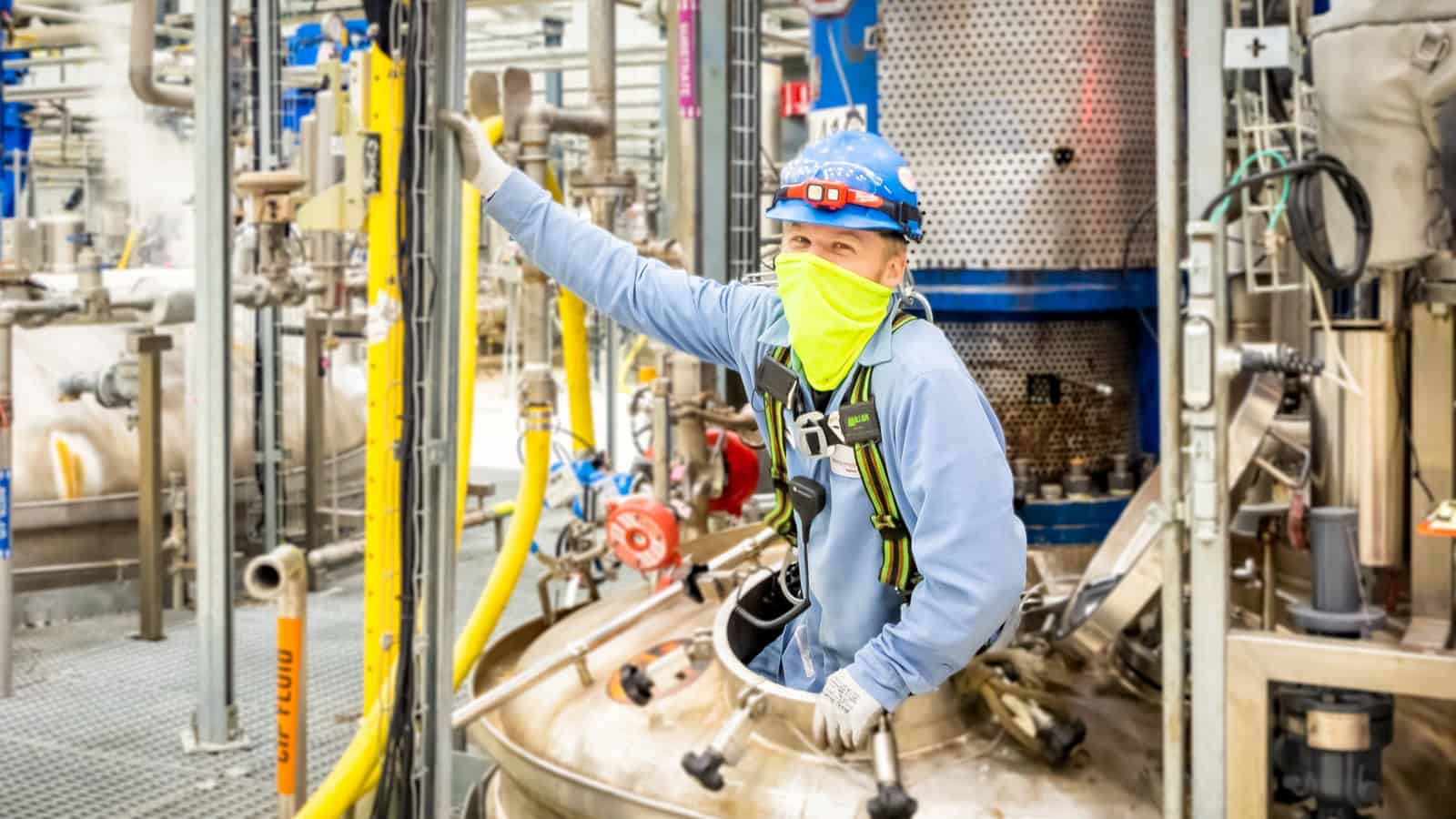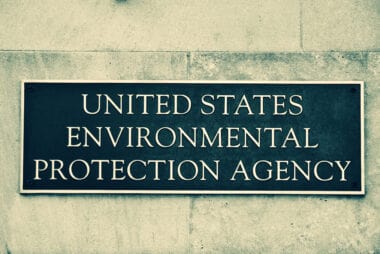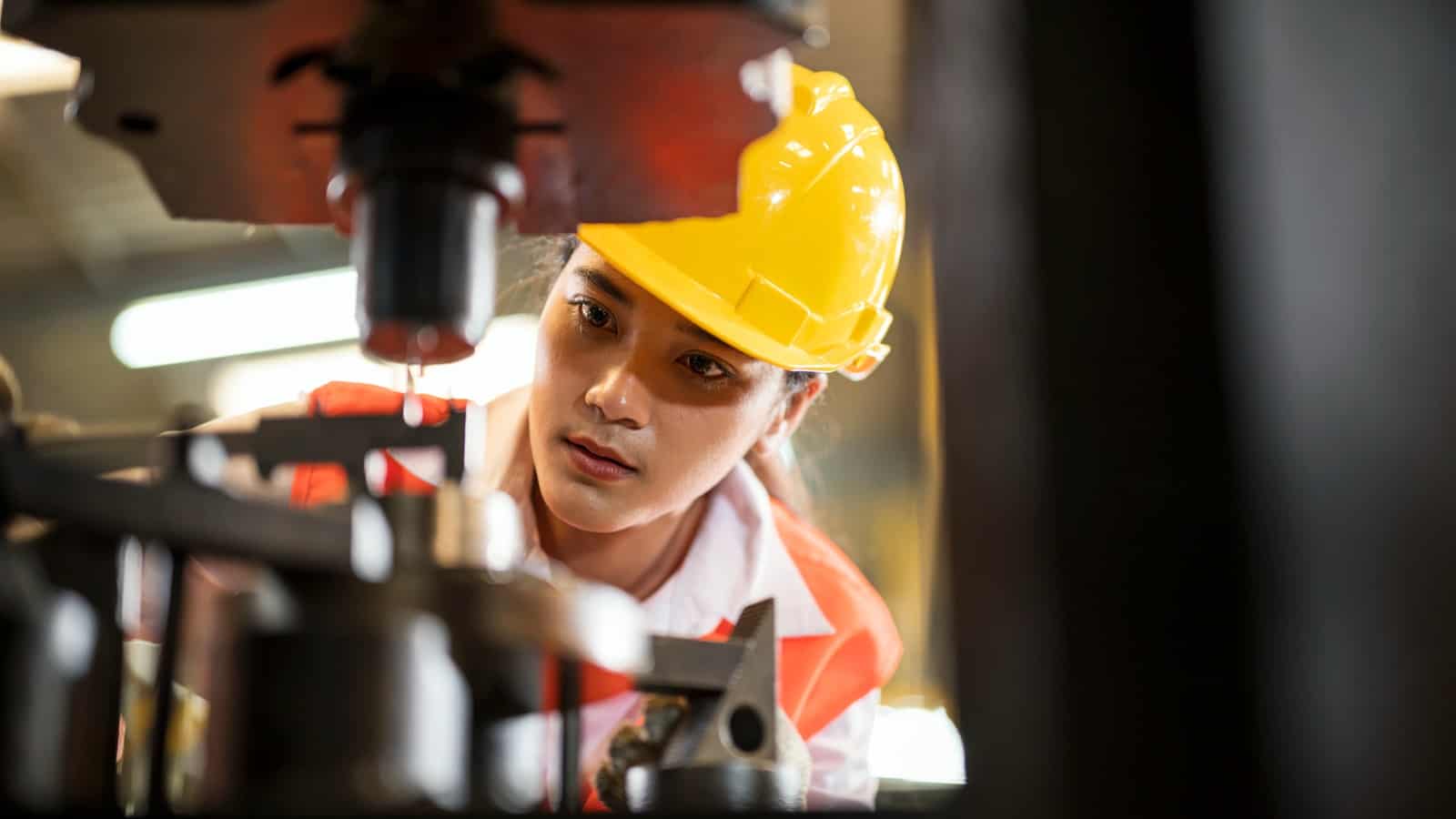Novonesis Lets Nature Guide Sustainability Plans

When it comes to good environmental stewardship, Novonesis takes its cue from the natural world itself.
“We are inherently sustainable because we draw from nature,” said Novonesis Senior Vice President of Planetary Health Biosolutions Rene Garza. “As biology matures, we find that nature has evolved to be an efficient utilizer of every single resource out there.”
Back to basics: It’s the perfect model for the newly formed Lyngby, Denmark–headquartered biosolutions firm, the product of a January merger between two Danish legacy companies: enzyme and microbial technology firm Novozymes and bioscience supplier Chr. Hansen.
- The portfolio of Novonesis—which is a combination of the Greek words for “new” and “beginning”—includes enzymes, microbes, novel vitamins and other naturally derived offerings.
- The business has customers across more than 30 industries: food and beverages, animal health and nutrition, energy, fine chemicals, dietary supplements, household care, plastics, plant health and more.
An early adopter: Legacy firm Novozymes set its sights on sustainable business practices more than two decades ago. In 2002, it became the first company in the world to publish a triple bottom-line integrated report.
- “We recognized early on that resources are finite, and the need to do more with less is part of ensuring a better quality of life,” Garza said of the company’s decision to undertake the annual report, a method of stocktaking on sustainability activities using three “bottom lines”: profit, people and planet. “We realized we’re not just here to generate money, but also to create an impact on society and our environment.”
Big goals: That’s why Novonesis has set lofty aims for itself (and is meeting them).
- Firmwide targets include carbon net neutrality by 2050, as well as a 75% reduction in emissions from its own operations and a 35% reduction in emissions from its supply chain by 2030.
- How is it doing all this? Innovation and persistence, according to Garza. “We want to improve our efficiency by as much as we can, and we do this by making improvement to our hardware—pump replacements, reengineering [of] our microorganisms. We also source renewable energy.”
- In fact, Novonesis is on track to source 100% of its energy from renewables by next year. Between 2018 and 2022, it reduced absolute emissions by 63% while increasing revenue.
Water, too: Novonesis knows how important water use is in the overall sustainability picture.
- The company is piloting a reverse-osmosis filtration system at its North America headquarters in Franklinton, North Carolina, that lets it recycle and reuse water. The program, scheduled for full operationality by next year, is going so well there are plans to replicate it at other Novonesis facilities worldwide.
- And at the company headquarters in Denmark, “we have been able to recycle 58 million tons [of water]—the equivalent of 23 Olympic-size swimming pools,” Garza reported.
What government can do: Novonesis and other manufacturers are making great strides in sustainability, but having the right policies in place at the federal level would make it easier for them to do more with less, Garza continued.
- “We need regulatory reform,” he told the NAM. “Federal regulations, if done well, really can drive innovation, particularly in biotechnology. … The government should [also] invest in pilot and demo scale fermentation capacity to allow startups to scale up.”
- The U.S. has the largest concentration of startup companies in the world, he went on, but there is now a “valley of death” between discovery and commercialization of innovations in biology, which federal funding could help remove.
- Finally, manufacturing in the U.S. needs the reinstatement of pro-growth policies from the 2017 Tax Cuts and Jobs Act, including 100% expensing for research and development costs and accelerated depreciation for capital investments.
Stakeholder education: Getting more people aboard the sustainability train is doable—but it will require continued education campaigns.
- “We need long-term thinking [and] to encourage stakeholders to prioritize the long-term over short-term gains,” Garza said. “Sustainability is about balancing immediate and future needs.”
NAM Publishes First-of-Its-Kind Report on Vast Potential of Artificial Intelligence for Manufacturers
Washington, D.C. – The National Association of Manufacturers released a first-of-its-kind report, “Working Smarter: How Manufacturers Are Using Artificial Intelligence,” detailing use cases for artificial intelligence in manufacturing and case studies of how manufacturers are already implementing AI technologies to strengthen America’s workforce, advance innovation and improve the quality of life for everyone.
The report provides an overview of insights from leading manufacturers, including Johnson & Johnson, Schneider Electric and Hitachi, on how AI can improve efficiency, product development, safety, predictive maintenance and supply chain logistics. The report also outlines a series of recommendations on how policymakers can help support the safe, responsible development of AI while promoting innovation and growth.
“So much of the media and policymaking conversation is focused on generative AI, but AI is far more than that for modern manufacturers,” said NAM President and CEO Jay Timmons. “It’s infused increasingly throughout the shop floor, research and development and beyond. Manufacturers are leading the way in the use and development of new AI technologies. From developing more effective clinical trials and improving workplace safety to strengthening supply chain resiliency and supporting workforce training for employees, AI is unlocking new opportunities to strengthen our modern manufacturing workforce and improve the lives of all Americans. Congress and the Biden administration can support manufacturers’ adoption of AI by enacting strong data privacy protections, investing in workforce training and providing regulatory certainty.”
“All possible futures for modern manufacturing in the U.S. involve AI,” said Johnson & Johnson Executive Vice President and Chief Technical Operations & Risk Officer and NAM Board Chair Kathy Wengel. “Given the importance of this generational technology, policymakers must develop sensible, carefully thought-out frameworks for various AI applications—and they should lean on manufacturers’ years of experience to engineer those frameworks. We need a policy environment that supports innovation and growth in manufacturing AI, because it will bolster U.S. competitiveness and leadership in this critical emerging field.”
Policy recommendations include the following:
- Invest in R&D and career technical education institutions that train the modern manufacturing workforce.
- Enact federal privacy legislation that advances individuals’ privacy and provides legal clarity that supports continued innovation and competitiveness.
- Employ a risk-based approach that tailors any new AI regulations—only if new regulations are necessary—to specific use cases and minimizes compliance burdens.
- Ensure that regulatory frameworks are aligned globally to maintain U.S. global leadership. The more disparate the approach to AI around the world, the more time, energy and investment companies will need to spend navigating misalignments.
Learn more here.
-NAM-
The National Association of Manufacturers is the largest manufacturing association in the United States, representing small and large manufacturers in every industrial sector and in all 50 states. Manufacturing employs nearly 13 million men and women, contributes $2.89 trillion to the U.S. economy annually and accounts for 53% of private-sector research and development. The NAM is the powerful voice of the manufacturing community and the leading advocate for a policy agenda that helps manufacturers compete in the global economy and create jobs across the United States. For more information about the NAM or to follow us on Twitter and Facebook, please visit www.nam.org.
NAM First-of-Its-Kind AI Report Includes Policy Recommendations

Artificial intelligence is improving efficiency, workplace safety, product development, machine maintenance and supply chain logistics at manufacturing facilities everywhere, according to a new, first-of-its-kind report from the NAM.
What’s going on: “Working Smarter: How Manufacturers Are Using Artificial Intelligence,” released today, details use cases for AI in the sector, discussing how manufacturers nationwide are using it to improve lives everywhere.
- The report features deep dives on AI-powered technologies at manufacturers, including Johnson & Johnson, Schneider Electric and Hitachi.
Trailblazers need good policy, too: “From developing more effective clinical trials and improving workplace safety to strengthening supply chain resiliency and supporting workforce training for employees, AI is unlocking new opportunities to strengthen our modern manufacturing workforce and improve the lives of all Americans,” said NAM President and CEO Jay Timmons. “Congress and the Biden administration can support manufacturers’ adoption of AI by enacting strong data privacy protections, investing in workforce training and providing regulatory certainty.”
- Legislators should “lean on” manufacturers’ deep experience when drafting AI-related legislation, added Johnson & Johnson Executive Vice President and Chief Technical Operations & Risk Officer and NAM Board Chair Kathy Wengel.
- “All possible futures for modern manufacturing in the U.S. involve AI,” she said. “Policymakers must develop sensible, carefully thought-out frameworks for various AI applications. … We need a policy environment that supports innovation and growth in manufacturing AI, because it will bolster U.S. competitiveness and leadership in this critical emerging field.”
The recommendations: The report contains immediately implementable policy recommendations for lawmakers:
- Invest in research and development and career technical education institutions to train the modern manufacturing workforce.
- Pass federal privacy legislation to advance individuals’ privacy protections and give legal clarity that will support continued innovation by manufacturers.
- Use a risk-based approach to new AI regulations that tailors any future laws to specific use cases and minimizes the burden of compliance.
- Ensure that AI regulation is aligned globally.
EPA Chemical Rule Will Add Delays, Costs for Manufacturers

The EPA recently finalized a rule that establishes a process for conducting risk evaluations for certain chemicals—but it will only hamstring U.S. manufacturing competitiveness if implemented, the NAM said this week.
What’s going on: In a final rule issued late last month under the Toxic Substances Control Act, the EPA “will now consider exposure to chemicals in air and water and, when possible, combined risks from exposure to multiple chemicals” (Chemical & Engineering News).
- “The [agency] will also consider risks to workers without assuming that they are wearing personal protective equipment [and] … chemical uses required for national security or critical infrastructure.”
Why it’s important: The final regulation will unnecessarily cost manufacturers in both time and money.
- The “new TSCA risk evaluation rule adds too many additional barriers and requirements on manufacturers and risks creating de facto bans on chemistries essential to both existing technologies and the development of new innovative materials,” the NAM said Monday.
- “Manufacturing relies heavily on new and existing chemicals, which are the building blocks of technologies that make modern life possible,” NAM Vice President of Domestic Policy Brandon Farris told the agency last December. “To ensure continued access to the newest chemicals which can make essential technologies even more effective and efficient, TSCA should be administered in a manner that protects health and the environment while avoiding unnecessary adverse economic impacts on business enterprises.”
What should be done: The agency should revise the final rule, the NAM said.
IRI Announces 2024’s Top Innovator Finalists

The Innovation Research Interchange has announced the finalists for this year’s IRI Innovation Excellence Awards.
What’s going on: The honors given by the IRI—the NAM’s innovation arm—pay tribute to organizations and individuals whose outstanding vision and tireless pursuit of excellence are having a positive impact on lives today and shaping the industries of tomorrow. Honorees come from companies of all sizes and industries.
The categories: Awards are given in five categories, three to companies and two to individuals. They are as follows:
- IRI Innovation Leadership Award (individual)
- IRI Promising Young Innovation Professional Award (individual)
- IRI Excellence Award for Innovation in Sustainability (company)
- IRI Excellence Award for Outstanding Innovative Culture (company)
- IRI Excellence Award for Digital and Technological Innovation (company)
Who participates: Each year, nominees comprise innovators who are leveraging technology to enhance operational performance at their companies or sustainability and fostering a collaborative workplace culture that celebrates innovation.
- High-performing leaders who drive sustainability initiatives are also recognized, and consultants and university partners working on exciting innovation projects with a company are eligible for nomination, too.
Why they’re important: In addition to building team unity and encouraging executive leadership to invest further in innovation, the awards give companies the chance to revisit the successes, challenges and lessons learned throughout their innovative projects.
- Selection as a finalist shows customers, prospects and partners that a company or individual is at the forefront of innovation.
Attend the celebration: Winners will be announced May 16 during the Innovation Celebration and Reception at the Innovators Summit in Boston. Celebration admission is included with summit registration.
About the IRI: The IRI offers insights, case studies, research, benchmarks and strategic connections—all built around a set of innovation growth drivers as determined by members annually. Learn more about the IRI here.
Thermo Fisher Scientific Helps Manufacturers with PFAS Testing

As government regulation of per- and polyfluoroalkyl substances ramps up worldwide, Thermo Fisher Scientific is seeing a boom in its PFAS testing business.
“We’ve seen an increase in demand from a number of countries in the Americas and in Europe,” said Toby Astill, director of environmental and food safety in chromatography and mass spectrometry at the life sciences giant. “Those regions are driving more discussions around current and future regulations than other regions.”
- In recent weeks, the Environmental Protection Agency has issued several final rules concerning PFAS. These include the first-ever national regulation limiting PFAS in drinking water to near-zero levels and, just last week, the designation of two PFAS chemicals as hazardous substances under the Superfund law.
Writing is on the wall: Thermo Fisher foresaw the need for comprehensive PFAS analysis early on. That’s why it’s been offering clients a full suite of testing capabilities for more than a decade.
- Commonly called “forever chemicals” because they do not break down easily in the environment, PFAS were used widely in everyday products starting in the 1940s, owing to their ability to put out fires and resist grease, corrosion and stains in addition to countless other consumer and industrial applications.
- Using chromatography—“technology that allows lab users to separate and analyze the different components in samples,” according to Astill—Thermo Fisher can “confirm the presence of a specific substance and determine how much is there.”
- The tech is not limited to PFAS, however; it can also detect, down to parts per trillion, the presence of pesticides, heavy metals and other substances, Astill said. And it works on samples of almost anything, including food packaging, water and even air.
Aiding compliance: In coming years, manufacturers may need to analyze their PFAS exposure comprehensively to remain compliant with Toxic Substances Control Act and other international regulations, including those from the EPA, Astill said.
Read the full story here.
Manufacturers: Noncompete Decision Threatens Manufacturers’ Ability to Protect IP
Washington, D.C. – Following the Federal Trade Commission’s vote in favor of a rule that would prohibit employers and their employees from entering noncompete agreements, National Association of Manufacturers Managing Vice President of Policy Chris Netram released the following statement:
“The FTC’s rule banning noncompete agreements is unprecedented and threatens manufacturers’ ability to attract and retain talent. In addition, today’s action puts at risk the security of intellectual property and trade secrets—anathema to an industry that accounts for 53% of all private-sector R&D.
“An NAM survey found that 66% of respondents—manufacturers of all sizes—said the ban would interfere with their operations, and nearly half said it would impact employee training programs. The ban could force manufacturers to revamp their human capital operations completely, enact burdensome controls or silo parts of their operations from each other, which would result in less training for employees, less collaboration, less innovation and less efficiency. The NAM will weigh all options in response to the commission’s vote, so that well-paying manufacturing jobs and innovation are not compromised.”
-NAM-
The National Association of Manufacturers is the largest manufacturing association in the United States, representing small and large manufacturers in every industrial sector and in all 50 states. Manufacturing employs nearly 13 million men and women, contributes $2.89 trillion to the U.S. economy annually and accounts for 53% of private-sector research and development. The NAM is the powerful voice of the manufacturing community and the leading advocate for a policy agenda that helps manufacturers compete in the global economy and create jobs across the United States. For more information about the NAM or to follow us on Twitter and Facebook, please visit www.nam.org.
Proposed “Right-to-Repair” Exemptions Would Hurt Manufacturers, Consumers

The NAM testified before the U.S. Copyright Office last week, explaining how two proposed exemptions from copyright protections would weaken manufacturers’ intellectual property rights, do significant harm to their businesses and potentially endanger consumers.
What’s going on: The Copyright Office is considering whether to recommend two exemptions from the Digital Millennium Copyright Act that would allow users to circumvent measures protecting copyrighted content.
- One proposal was designed to allow the so-called “right-to-repair” by enabling access to operational data (including diagnostic and telematics data) from automobiles, agricultural vehicles, marine vessels and more. The other is focused on industrial equipment.
NAM speaks out: “The basis of the so-called ‘right-to-repair’ movement hinges on the false notion that owners do not have the ability to repair their own equipment,” NAM Vice President of Domestic Policy Charles Crain said at the recent hearing. “The truth, however, is that the majority of [original equipment manufacturers] already provide a wide range of resources and tools that allow users—and third-party repair businesses—to maintain, diagnose and repair products.”
- The NAM previously submitted comments urging the Copyright Office not to adopt the proposed exemptions.
Why it’s important: “These exemptions would undermine manufacturers’ IP rights in service of right-to-repair—and the record does not support their adoption,” Crain continued.
- The exemptions are too broad and inadequately defined, and their proponents have “failed to show that users will be adversely affected absent the ability to circumvent [copyright law].”
- What’s more, the exemptions “would expose proprietary information to public consumption and use, likely endangering consumers and allowing for unlawful modifications of government-mandated safety and emissions limits.”
The last word: “In short, right-to-repair is a solution in search of a problem,” Crain said.
NAM Helps Strike Forced IP Transfer from WHO Draft

In a significant change that protects manufacturers’ intellectual property rights, an updated draft of the World Health Organization’s pandemic agreement no longer includes IP language that would have pressured or compelled manufacturers to turn their innovations over to foreign countries, including competitors such as China, POLITICO Pro (subscription) reports.
- Convincing organizations such as the WHO to reject forced IP transfers has been a top priority for the NAM, and this week’s announcement represents significant progress for manufacturers.
What’s going on: “The latest text has scrapped a clause stating countries will ‘consider supporting’ time-bound suspensions of intellectual property rights during pandemics. Instead, each country will consider supporting ‘appropriate measures’ to scale up the manufacture of products that could help stymie a future pandemic.”
- The draft is set to be put to WHO members next month for a vote at the 77th World Health Assembly in Geneva, Switzerland.
- Subject to applicable laws, under the draft agreement countries will also be required to “support … capacity-building for the transfer of technology and knowhow for pandemic-related health products on mutually agreed terms.”
- The text indicates that the pathogen access and benefit sharing system—which would require nations to share pathogen information “with the WHO in exchange for access to the resulting health products developed to fight the new threat”—is still under negotiation. Thus far, countries have been unable to agree on the terms of that exchange.
Why it’s important: IP waivers would significantly harm manufacturers and their ability to compete globally.
- The NAM led the charge with regard to the World Trade Organization earlier this year, when it warned policymakers in the U.S. and abroad about the problems inherent in expanding the WTO’s 2022 TRIPS waiver on IP rights to include COVID-19 therapeutics and diagnostics.
- As a result of that advocacy, the waiver was ultimately kept out of the WTO’s final Ministerial Declaration last month.
- In addition, in January, the NAM responded to the U.S. Department of Health and Human Services’ request for comments regarding the WHO’s pandemic preparedness agreement. The NAM urged that any IP waiver be removed from the WHO text.
The funding issue: Another challenge the WHO text puts off is the financing of all the initiatives it lays out.
- While it mentions establishing a “coordinating financial mechanism,” it does not detail how the mechanism would work.
How Will AI-Run Factories Be Different?

A common theme in science fiction is the fully automated, robotized factory that manufactures nothing but robots. We’re not there yet, but the fully automated manufacturing plant has already begun making everyday products, including computer parts, electric shavers and CNC machines.
The promise of AI: Now generative AI is promising to take manufacturing automation manufacturing to a new level.
- At the 2023 Hannover Messe trade fair in Hanover, Germany, Siemens and Microsoft showcased an offering now in use in factories worldwide: a system that uses ChatGPT to generate code for industrial computers known as programmable logic controllers. (For a deeper dive into what this means for manufacturing, read the full version of this article by Tim Hornyak in the Innovation Research Interchange’s Research-Technology Management magazine.)
Why it’s important: The innovation allows users to ask ChatGPT to generate code for specific tasks (i.e., a program to operate the stamping of a part).
- In addition to saving time and reducing the likelihood of errors, it is capable of understanding commands given in natural language, a characteristic that vastly increases the number of potential users.
Efficient designs: Creating more efficient designs is another early use case for generative AI.
- General Motors has used the technology to evaluate better designs for some of the roughly 30,000 parts that go into the average car. For example, a standard seat bracket—an important safety component that binds seatbelt fasteners to seats as well as seats to the floor of the car—consists of eight separate pieces welded together.
- Generative-design software used by GM analyzed the requirements and suggested more than 150 alternative designs, far more than the two or three options a designer can typically offer. GM engineers chose one: a single piece of stainless steel that is 40% lighter and 20% stronger than the conventional part.
Pharma applications: Generative AI looks promising for the pharmaceutical industry, too, given its potential for cutting costs and drug time to market.
- Merck has used generative AI to create synthetic images of complex but rare defects, a group for which training data are limited. The drugmaker’s quality-control sensors use the synthetic images to watch for novel defects.
Other potential use cases: The possible uses for generative AI in other areas is vast and includes the following:
- Reducing time and cost involved in creating physical prototypes
- Automating search and summary of documents related to manufacturing equipment, which would speed repairs and maintenance
- Accelerating supply chain operations by forecasting demand patterns, minimizing production downtime and suggesting better transport routes
- Customizing products or solutions to better suit customer needs
- Forecasting raw materials needs, optimizing production schedules and identifying production inefficiencies
However … Generative AI in manufacturing is not without its challenges. The energy cost to power a single server rack in the U.S. is $30,000 a year.
- Just one training run for an AI engine consumes the power equivalent of 120 U.S. households per year.
- With the reliance on large datasets, manufacturers are concerned about data privacy and security, necessitating robust data-protection measures.
- The integration of AI in manufacturing may require a change in workers’ skillsets and corporate culture.
- As AI plays a more significant role in decision-making, ethical questions about bias and accountability are emerging.
- Manufacturers have to ensure that AI systems operate fairly and transparently.
Find out more: AI in manufacturing is just one of the timely topics covered in depth in Research-Technology Management, the journal of the IRI, the NAM’s innovation division. Learn more.